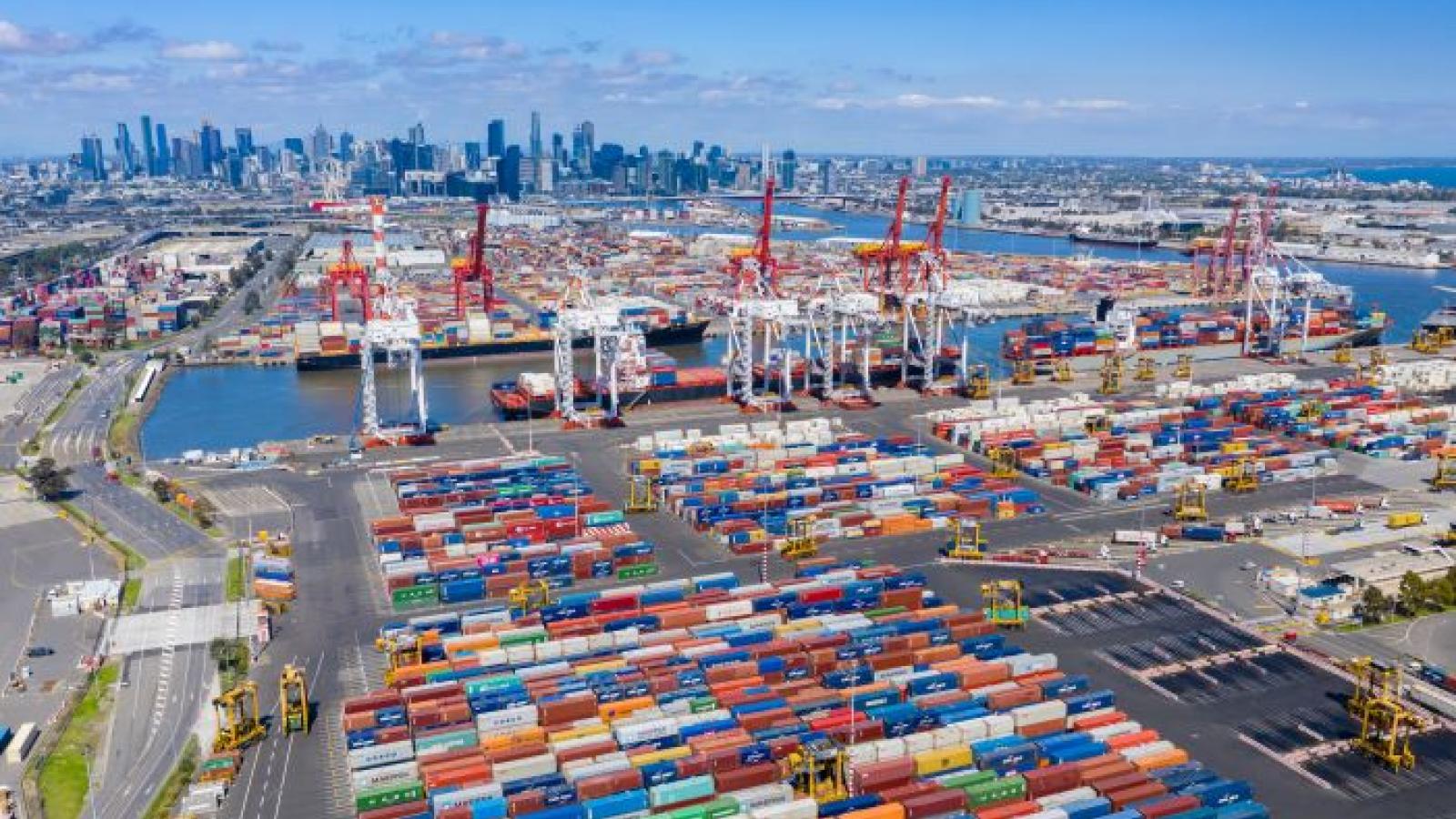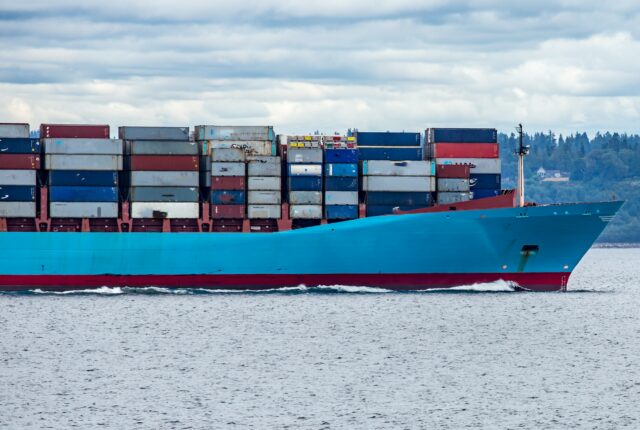
Container Terminal Landside Fees – Timing Updates
Last week (9 Oct), the Victorian Department of Transport & Planning (DTP} announced that the Victorian Minister for Ports and Freight, Melissa Horne MP, had approved two new measures for inclusion in the Victorian Voluntary Pricing Protocol (VPP) on container terminal landside charges (access & infrastructure fees):
- Introduce a standard submission template for container terminal operators to provide greater levels of granular data in a consistent format in relation to changes to the terminal access fee/infrastructure fee.
- Request that all stevedores voluntarily change landside pricing once per year on 1 January, commencing from 1 January 2025
Below are the proposed timings of future price changes for stevedores adopting the Victorian VPP:
- Price changes will come into effect on 1 January 2025 and annually thereafter.
- The 60-day notice to industry and DTP would be issued on Friday 1 November 2024.
- The 30-day notice to industry would be issued on Monday 2 December 2024.
More information is available on the DTP website about the Victorian Voluntary Pricing Protocol
What is the Background to this Change?
CTAA understands that the Victorian Government had become increasingly concerned that the voluntary approach to oversighting container stevedore landside fee increases was not sufficiently robust in the face of significant, continuing fee increases, year on year.
This view strengthened when in January this year DP World Australia increased landside Terminal Access Fees (TACs) in Melbourne by as much as 52% (for laden export containers).
The unfettered nature of the increases, with no negotiation with landside stakeholders and limited data available publicly to justify the changes, led to more and more stakeholders voicing alarm at the impacts on supply chain costs.
The Victorian Government also believed that strengthening the voluntary approach would respond to some of the recommendations from the Productivity Commission’s Maritime Inquiry Report (Dec 2022) to align stevedore price changes to a single date.
CTAA understands that Patrick Terminals led the advocacy for amendments to the voluntary protocol. This is a strategy to stave off consideration of a Mandatory Code administered through a national regulatory agency such at the ACCC, which was the full recommendation in the Federal Productivity Commission’s Report.
We understand that Victoria International Container Terminal (VICT) has agreed to abide by the changes, while DPWA doesn’t need to do much as the chosen alignment date coincides with its existing cycle of fee amendment announcements (i.e. 1 January commencement in the calendar year).
What are the Benefits of the Change?
The alignment of the date and a protocol calling for only one pricing amendment per year are welcomed.
This will remove the need for transport operators to consult their customers multiple times per year about changes to individual stevedore price amendments.
It also means that container terminal operators can’t adopt a “follow the leader” strategy by matching (at least to a large degree) the increases announced by a competitor stevedore company. They will all need to announce on the same date and do so only once per year.
Does this Change in Victoria Impact on Container Terminal Fee Announcements in the other States?
It is anticipated that if Patrick Terminals has agreed to abide by the Voluntary Pricing Protocol in Victoria, it will amend its fee announcement cycle nationally to a 1 January commencement.
Clearly, this will require Patrick Terminals to amend its fees less than 12 months since its last fee increases in March 2024. However, this will represent a “one-off” to align the implementation timings into the future.
DPWA’s cycle of fee adjustments remains as 1 January of the calendar year.
The Victorian Protocol does not impact the other stevedore companies in QLD, NSW and SA, namely Hutchison Ports and AAT in Brisbane, Hutchison Ports in Port Botany, and Flinders Adelaide Container Terminal (FACT) in Adelaide.
CTAA is unclear whether Transport & Infrastructure Ministers will seek to have the National Container Stevedore Charges Protocols published by the National Transport Commission (NTC) amended to align with the Victorian changes.
Is there Still a Need for a National Mandatory Code?
While the Victorian protocol amendment requires terminal operators to provide greater levels of granular data related to the justification for fee increases, this information remains confidential to the Department and is unavailable to industry.
Also, the Victorian DTP has no powers to act if it considers the proposed increases to be unjustified.
The Voluntary Pricing Protocol (VPP) also doesn’t address a fundamental question …
that question is, how is the need for an increase in fees for terminal services being shared between landside stakeholders and the terminals’ traditional quayside customers – the Shipping Lines?
The only visibility that landside stakeholders get on this fundamental question is when the ACCC publishes its annual Container Stevedoring Monitoring Report each year – albeit with pricing data that is 12 months’ in arrears and highly aggregated.
And the last two ACCC Reports tell a stark story …
In the 2022/23 ACCC Report, aggregated revenue for “container lifts” collected from the shipping lines was reported to have decreased by 2.7%, while the percentage of the contribution to lift revenue from landside fees increased by 5%. (Key stevedoring results 2022–23, page 7, ACCC Report 2022-23)
In other words, landside fee increases accounted for all of the revenue increases to meet higher terminal operating expenses and investments, while the shipping lines enjoyed a reduction in contracted rates.
In the 2021/22 ACCC Report, aggregated revenue for “container lifts” collected from the shipping lines increased by only 1.4%, yet the percentage of lift revenue from landside fees increased by a whooping 14.6%!! (Key stevedoring results 2021-22, page xxiii, ACCC Report 2022-23).
Only though a Mandatory Code, administered by a regulatory watchdog such as ACCC given legislative “teeth” to arbitrate, would landside stakeholders have confidence that the collection of revenue from the terminals’ customers (quayside and landside) is equitable.
Successive ACCC Reports show that in 2016/17, container terminal revenue derived from shipping lines represented 82% of overall revenue, and 18% from landside revenue. In 2022/23, that ratio had altered to 56% from shipping lines and 44% from landside fees.
Is that dramatic change over the space of only six years fair and equitable?
There is also the threshold question about whether Australia’s shippers (importers & exporters) are being charged twice for the same container terminal services – once when they pay ever-increasing Terminal Access Fees (TACs) charged by terminals to their transport service provider then passed through, and again when they pay high Terminal Handling Charges (THCs) directly to shipping lines … for the same terminal services!!
Again, only a regulatory watchdog could enquire into these commercial arrangements to unpick whether they are fair, or an abuse of market power.
The container terminal landside fees in Australia is set to increase operational costs for sea freight. These additional charges may have a ripple effect on shipping expenses, influencing logistics strategies and overall supply chain costs in the region.
Author
ATOS-MARelated posts
Highway to Growth: The Economic Impact of Road Freight
Road freight plays a crucial role in the economic development of countries aroun
Navigating the Waves: Strategies for Efficient and Cost-Effective Sea Freight
In the vast world of international trade, sea freight remains a cornerstone for
Adapt and Overcome: The Future of Shipping
Are changes permanent? Essentially, no. Companies are thrown various obstacles,






